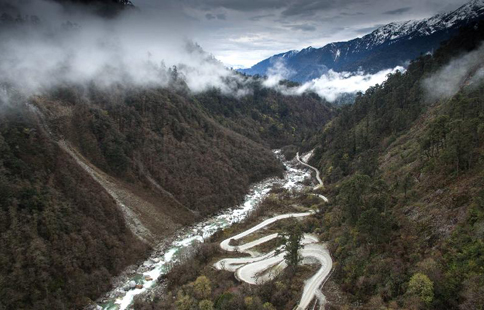WASHINGTON, April 10 (Xinhua) -- North America's freshwater lakes are getting saltier due to development and road salt used during the winter, a new study said Monday.
"The picture is sobering," lead author Hilary Dugan, a limnologist at the University of Wisconsin-Madison, said in a statement. "For lakes, small amounts of shoreline development translate into big salinization risks."
The study, published in the U.S. journal Proceedings of the National Academy of Sciences, was the first large-scale analysis of chloride trends in freshwater lakes in the United States and Canada.
It included 371 freshwater lakes, each of which was larger than four hectares (0.04 square kilometers) in size with at least 10 years of recorded chloride data.
The majority of the lakes were located in a North American Lakes Region that includes Connecticut, Maine, Massachusetts, Michigan, Minnesota, New Hampshire, New York, Ontario, Rhode Island, Vermont, and Wisconsin.
Results showed that roads, parking lots and other impervious surfaces within 500 meters of a lake's shoreline were a strong predictor of elevated chloride concentrations.
In the North American Lakes Region, 70 percent, or 94 of 134, of lakes with more than one percent impervious land cover in their 500-meter buffer zone had increasing chloride trends.
When results are extrapolated to all lakes in the North American Lakes Region, some 7,770 lakes may be at risk of rising salinity.
If current salinization trends continue, many North American lakes will surpass the chloride concentration levels stipulated by the U.S. Environmental Protection Agency (EPA) in the next 50 years.
Within this study, 14 North American Lakes Region lakes are expected to exceed the EPA's aquatic life criterion concentration of 230 mg/L by 2050, and 47 are on track to reach chloride concentrations of 100 mg/L during the same time period.
According to the study, the use of road salt to keep winter roads navigable has been escalating in North America since the 1940s.
Each year, some 23 million tons of sodium chloride-based deicer is applied to North America's roads to melt away snow and ice.
Much of this road salt washes into nearby water bodies, where it is recognized as a major source of chloride pollution to groundwater, streams, rivers, and lakes.
"In the North American Lakes Region -- where road salt is a reality -- roads and other impervious surfaces within 500 meters of a lake's shoreline are a recipe for salinization," said coauthor Kathleen Weathers, an ecosystem scientist at the Cary Institute of Ecosystem Studies.
"We need to manage and monitor lakes to ensure they are kept 'fresh' and protect the myriad of services they provide, from fisheries and recreation to drinking water supplies."

















